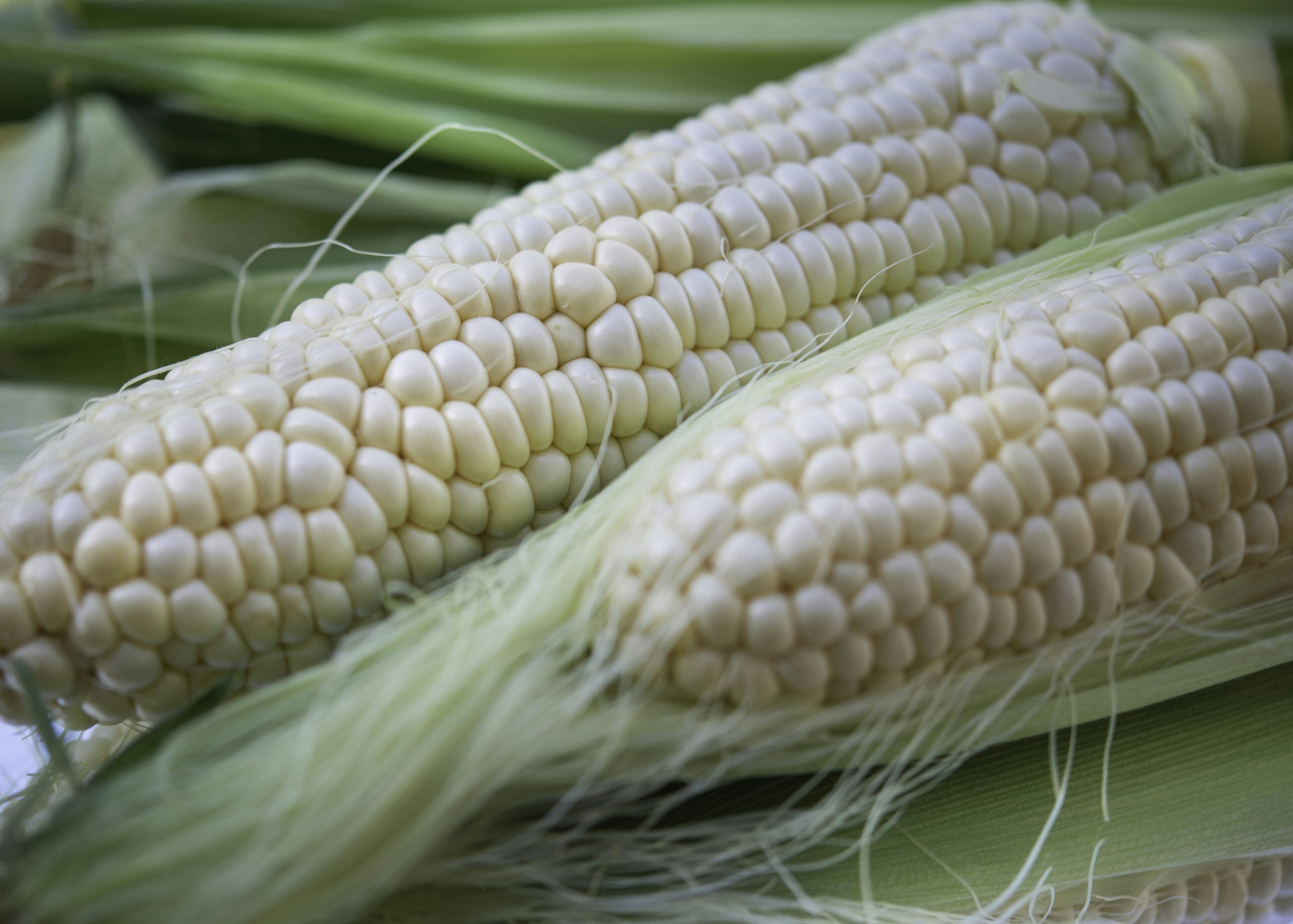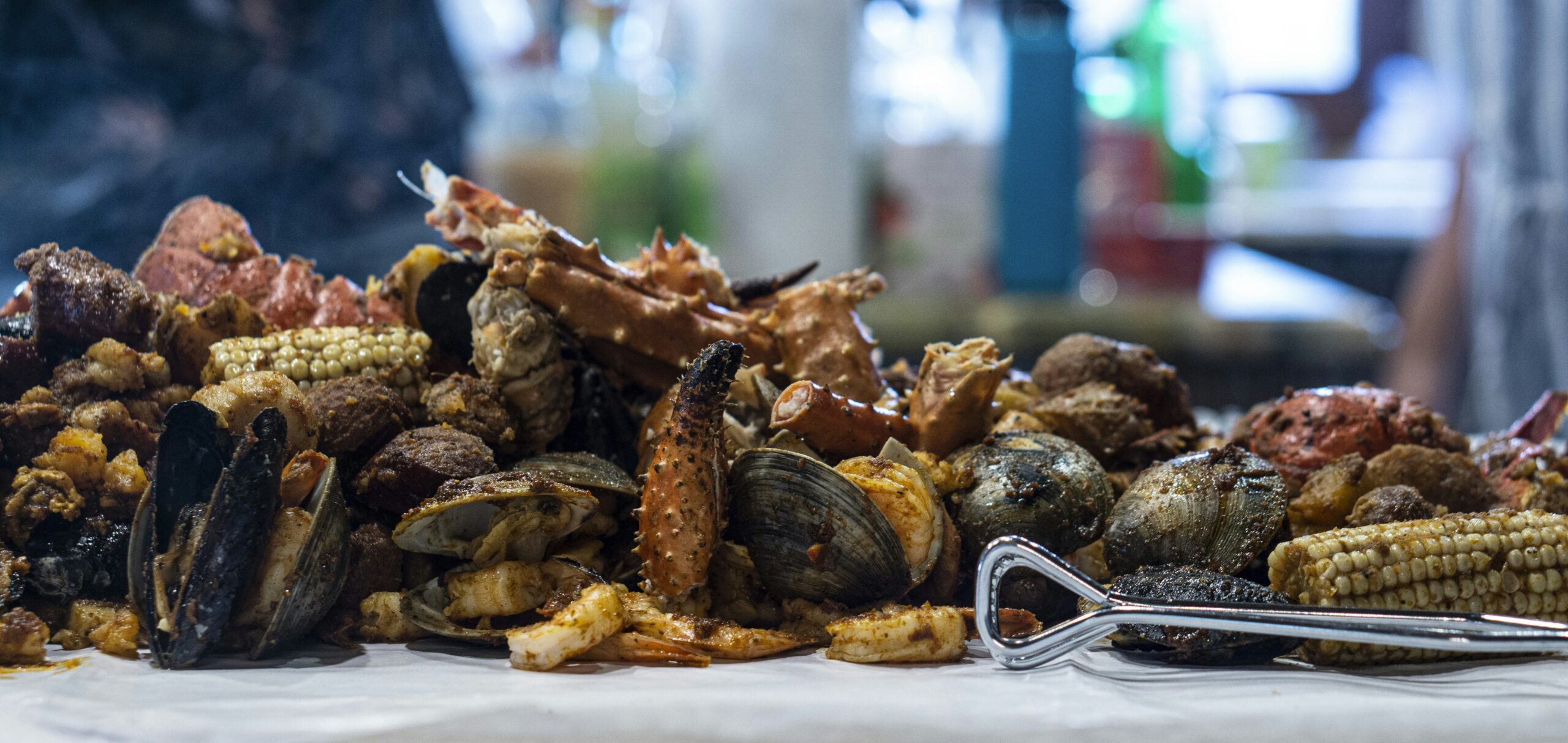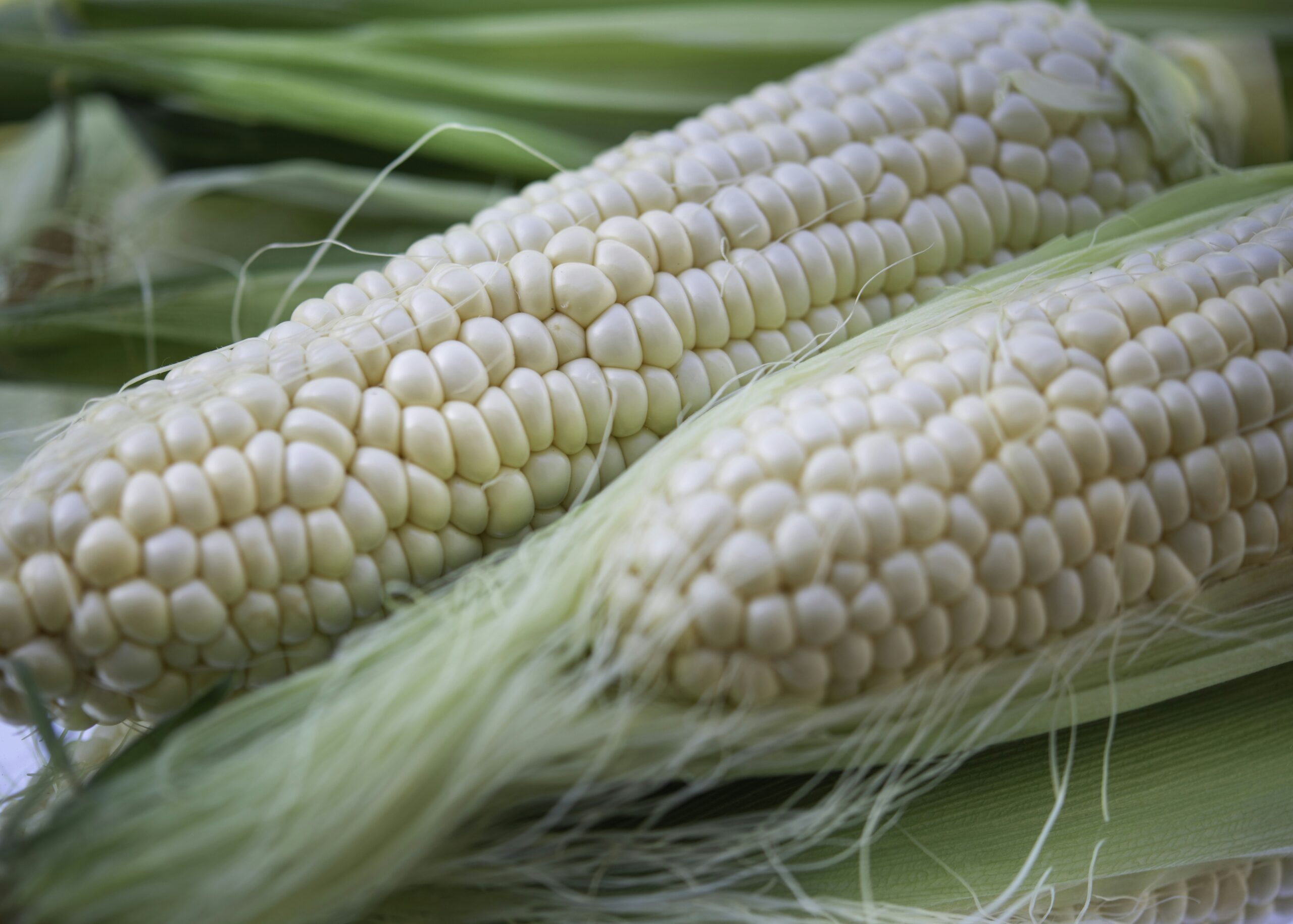Imagine yourself sitting at a cozy diner in the heart of the South, surrounded by mouthwatering dishes that are as comforting as they are delicious. The aroma of fried chicken, collard greens, and peach cobbler fills the air, drawing you into a world of flavors that are undeniably Southern. But have you ever wondered what truly makes Southern food Southern? It’s more than just a collection of recipes; it’s a cultural heritage that combines history, tradition, and the deep-rooted sense of community found in the South. In this article, we’ll take a closer look at the ingredients, techniques, and influences that give Southern cuisine its unique and beloved character. Get ready to savor the essence of the South on a plate! Southern food is a delicious and diverse cuisine that has been shaped by a variety of historical, geographical, and cultural influences. From indigenous and African culinary traditions to European and Caribbean ingredients, Southern food is a melting pot of flavors and techniques. In this article, we will explore the rich history of Southern cuisine, the role of geography in shaping its ingredients, popular Southern dishes, traditional preparation methods, iconic Southern beverages, the significance of food in Southern culture, the impact of slavery on Southern cuisine, modern interpretations of Southern food, and the health aspects of this beloved cuisine.

Historical Influences
Indigenous Influence
The roots of Southern cuisine can be traced back to the indigenous peoples who inhabited the region long before European settlers arrived. Native American tribes like the Choctaw, Cherokee, and Creek had a profound impact on Southern food through their cultivation of staple crops such as corn, beans, and squash. These ingredients became integral to Southern cooking, forming the foundation of dishes like cornbread, succotash, and stews.
African Influence
The arrival of enslaved Africans in the South during the colonial era brought about another significant influence on Southern cuisine. Africans brought with them a wealth of culinary knowledge and introduced new ingredients such as okra, yams, and black-eyed peas. They also introduced cooking techniques such as frying and stewing, which have become central to Southern cooking. The resulting fusion of African and European flavors gave birth to iconic dishes like gumbo and jambalaya.
European Influence
European settlers, particularly those from England, Scotland, and Ireland, also played a pivotal role in shaping Southern cuisine. They brought with them their own culinary traditions, including the use of wheat and dairy products. European settlers introduced dishes such as biscuits, fried chicken, and apple pie, which have become quintessential Southern fare. The blending of European and African cooking techniques and ingredients created a unique culinary identity that continues to evolve to this day.
Caribbean Influence
The Caribbean has had a profound impact on Southern cuisine, particularly in states like Louisiana and Florida with their close proximity to the region. The Spanish, French, and African influences that shape Caribbean cuisine have seeped into Southern cooking, resulting in dishes like jerk chicken, conch fritters, and plantain dishes. The use of spices, tropical fruits, and seafood in Caribbean cuisine has added an exotic flair to the Southern culinary landscape.
Geographical Factors
Climate and Agriculture
The Southern region’s warm climate and fertile soils have played a significant role in shaping the ingredients and agricultural practices that define its cuisine. The long growing season allows for the cultivation of a wide array of crops, including corn, rice, peanuts, and sweet potatoes. The abundance of fresh produce year-round has fostered a culture of farm-to-table cooking, where ingredients are often sourced locally and enjoyed at the peak of their freshness.
Proximity to the Ocean
The Southern region’s proximity to the Atlantic Ocean and the Gulf of Mexico has made seafood a prominent component of its cuisine. Shrimp, oysters, crawfish, and catfish are just a few examples of the seafood that plays a central role in Southern dishes. From classic seafood boils to Creole-inspired gumbo, the bounty of the ocean has added depth and complexity to Southern cooking.
River and Watershed Influence
Southern cuisine is also heavily influenced by the rivers and watersheds that crisscross the region. The Mississippi River, for example, has provided a vital transportation route for both people and goods, facilitating the exchange of culinary traditions and ingredients. It has also shaped the cuisine through its rich bounty of fish, such as catfish and bass, which are commonly found in Southern recipes. The rivers and watersheds of the South have not only influenced the ingredients but also the cooking techniques used, such as smoking fish or slow-cooking meat in a barbecue pit.
Signature Southern Ingredients
Corn and Cornmeal
Corn is a staple ingredient in Southern cuisine and is used in a wide range of dishes, including cornbread, hushpuppies, and grits. Cornmeal, a coarser form of ground corn, is the foundation for these dishes and adds a distinctive texture and flavor to Southern fare.
Rice
Rice, another staple crop, has been cultivated in the South since the colonial era. It is integral to dishes like jambalaya, red beans and rice, and Charleston red rice. The African influence on Southern cuisine is evident in the use of rice as a key ingredient in many dishes.
Pork
Pork has long been a mainstay of Southern cooking, taking various forms such as smoked hams, pork chops, and pulled pork. The abundance of pigs in the South, coupled with the tradition of whole hog barbecue, has made pork a beloved and iconic protein in Southern cuisine.
Southern Greens
Collard greens, mustard greens, and turnip greens are prominent ingredients in Southern cooking, often simmered slowly with smoked meats to create a flavorful side dish. Their earthy flavors and hearty textures provide a perfect complement to many Southern meals.
Peaches and Pecans
The South is known for its bountiful orchards, producing some of the finest peaches and pecans in the country. Peaches are a quintessentially Southern fruit, used in desserts like peach cobbler and pies. Pecans, on the other hand, are commonly used in Southern dishes like pecan pie and pralines, adding a rich, buttery flavor to these treats.
Common Southern Dishes
Fried Chicken
Fried chicken is perhaps the most iconic Southern dish, with its crispy golden skin and juicy meat. The chicken is typically marinated in buttermilk or seasoned with a blend of spices before being dredged in flour and fried to perfection. Served with sides like biscuits and collard greens, fried chicken is a beloved comfort food that has become synonymous with Southern cuisine.
Gumbo
Gumbo is a thick, stew-like dish that originated in Louisiana and is a blend of French, African, and indigenous influences. Made with a roux, a thickener made from flour and fat, and flavored with a variety of proteins such as shrimp, sausage, and chicken, gumbo is a hearty and flavorful dish often served over rice.
Collard Greens
Collard greens are a Southern classic and a staple side dish. Traditionally simmered with smoked meats and seasoned with spices, collard greens are tender, flavorful, and packed with nutrients. Served with cornbread or rice, collard greens are a must-have on any Southern table.
Peach Cobbler
Peach cobbler is a beloved Southern dessert that features juicy peaches baked with a sweet, buttery crust. The peaches are typically seasoned with cinnamon and sugar, and the crust can be either a flaky pastry or a cake-like topping. Served warm with a scoop of vanilla ice cream, peach cobbler is a comforting and delicious end to any Southern meal.
Barbecue
Barbecue is a Southern tradition that varies by region but always involves slow-cooking meat over low heat. From pulled pork in North Carolina to beef brisket in Texas, barbecue has become synonymous with Southern cooking. The meat is often marinated in a flavorful sauce and cooked for hours until tender and smoky. Barbecue is often served with classic sides like coleslaw, baked beans, and cornbread.

Preparation Methods
Frying
Frying is a quintessential cooking method in Southern cuisine, used to achieve crispy textures and rich flavors. From the iconic fried chicken and hushpuppies to fried green tomatoes and catfish, frying is a popular technique that adds a satisfying crunch to many Southern dishes.
Stewing and Braising
Stewing and braising are slow-cooking methods that are commonly used in Southern cooking to create tender and flavorful dishes. Collard greens, for example, are often stewed with smoked meats for hours to develop their distinct taste. Braising is also popular for tougher cuts of meat like pork shoulder or beef brisket, which are cooked slowly in flavorful liquids until they become tender and succulent.
Smoking
Smoking is a traditional method of cooking in the South, particularly for meats like pork, beef, and poultry. The meat is slow-cooked over indirect heat from smoldering wood chips, which infuses it with a rich, smoky flavor. Smoking is often used in barbecue, where the meat is cooked for hours until it reaches a melt-in-your-mouth consistency.
Baking
Baking is a common method in Southern cuisine, particularly for desserts like pies, cobblers, and cakes. Southern bakers are known for their mastery of flaky pie crusts and moist, tender cakes. Baking is also used for savory dishes like cornbread and biscuits, which are integral to the Southern table.
Pickling and Preserving
Pickling and preserving have long been important techniques in Southern cooking, allowing communities to store and enjoy produce throughout the year. Pickled vegetables like okra and green tomatoes are popular, as are preserves like chow-chow and pepper jellies. These techniques add tangy and sweet flavors to dishes, creating a unique Southern culinary experience.
Southern Beverages
Sweet Tea
Sweet tea is a refreshing and quintessential Southern beverage. Strongly brewed black tea is sweetened with copious amounts of sugar and served over ice. Refreshing and often enjoyed on hot summer days, sweet tea is a beloved accompaniment to many Southern meals.
Mint Julep
The mint julep is a classic Southern cocktail made with bourbon, sugar, water, and fresh mint leaves. It is traditionally served in a silver or pewter cup and garnished with a sprig of mint. The mint julep is strongly associated with the Kentucky Derby and is a symbol of Southern hospitality and elegance.
Bourbon
Bourbon, a type of whiskey, is an integral part of Southern culture and is often referred to as America’s native spirit. Made primarily from corn and aged in charred oak barrels, bourbon is known for its rich, caramel flavors. Whether enjoyed neat, on the rocks, or in classic cocktails like the Old Fashioned, bourbon is a staple of Southern beverages.
Southern Comfort
Southern Comfort is a fruit-flavored liqueur that originated in New Orleans and has become a popular choice for many Southern cocktails. Its blend of fruit flavors, spices, and whiskey provides a smooth and sweet profile, making it a versatile ingredient in various mixed drinks.
Moonshine
Moonshine, a high-proof distilled spirit, has a long history in the South. While it may have illicit beginnings, moonshine now enjoys legal production in many Southern states. This clear, unaged spirit is known for its potency and is often sipped neat or used as a powerful base for cocktails.

Role of Food in Southern Culture
Hospitality and Sharing
Food plays a central role in Southern hospitality, which emphasizes warmth, generosity, and sharing with others. Whether it’s a potluck dinner, a backyard barbecue, or Sunday brunch, Southerners take pride in hosting gatherings and preparing meals for family, friends, and community members. Sharing a meal is seen as an opportunity to forge connections and strengthen relationships.
Traditions and Festivals
Southern culture is steeped in rich traditions and vibrant festivals that revolve around food. From Mardi Gras in Louisiana to the Kentucky Derby, many Southern celebrations center around culinary delights. Traditional foods like king cake, gumbo, and bourbon balls hold a special place in these festivities, honoring both the past and present.
Religious Practices
Religion plays a significant role in Southern culture, and food is often intertwined with religious practices. Church gatherings often feature potluck dinners, where members of the congregation contribute homemade dishes to share. These gatherings foster a sense of community and provide an opportunity for fellowship centered around food.
Impact of Slavery on Southern Cuisine
Influences from African Cuisine
The transatlantic slave trade had a profound impact on Southern cuisine, as enslaved Africans brought with them a rich culinary heritage. African ingredients and cooking techniques, such as okra, yams, and stewing meats, were incorporated into the Southern kitchen, shaping the flavors and textures of many dishes we know today.
Soul Food
Soul food, a distinct Southern cuisine developed by African Americans, is a testament to the lasting impact of slavery on Southern cooking. With ingredients like collard greens, fried chicken, and cornbread, soul food celebrates the creativity, resourcefulness, and resilience of enslaved Africans and their descendants.
Role of the Plantation Kitchen
The plantation kitchen played a central role in Southern cuisine during the era of slavery. Enslaved cooks, often skilled individuals, were responsible for transforming the meager ingredients available into flavorful and nourishing meals for the plantation owners and their families. Their contributions to Southern cuisine continue to be recognized and celebrated today.
Modern Interpretations of Southern Food
Fusion Cuisine
As Southern cuisine has evolved, chefs and home cooks have embraced fusion techniques, combining traditional Southern ingredients with flavors and techniques from other cuisines. For example, Southern barbecue has influenced the creation of Korean-inspired “Korean BBQ” dishes, where barbecue techniques blend with Korean spices and flavors. This fusion of culinary traditions breathes new life into traditional Southern dishes.
Farm-to-Table Movement
The farm-to-table movement has gained traction in recent years, with restaurants and home cooks alike emphasizing the use of locally sourced, seasonal ingredients. This movement aligns with the longstanding Southern tradition of enjoying fresh, local produce, and has spurred the growth of farmers’ markets and farm-to-table restaurants throughout the region.
Invention of New Dishes
Southern cuisine continues to evolve and adapt, with innovative chefs and cooks pushing the boundaries and inventing new dishes that still pay homage to traditional flavors. From shrimp and grits variations to reinvented classic desserts, these new creations showcase the creativity and talent of the Southern culinary scene.
Health Aspects of Southern Cuisine
Criticism and Health Concerns
While Southern cuisine is beloved for its flavor and comfort, it has also faced criticism for its high calorie, high fat, and high sodium content. Traditional Southern dishes often rely on ingredients like butter, lard, and salt for their distinct flavors, leading to health concerns such as heart disease and obesity. These concerns have prompted a reevaluation of cooking techniques and ingredient choices in Southern cuisine.
Traditions of Healthy Eating
Despite the criticism, Southern cuisine also has a long-standing tradition of healthy eating. From the abundance of fresh produce available in the Southern region to traditional cooking methods like stewing and smoking, many Southern dishes can be prepared in a health-conscious manner. Emphasizing whole foods, lean proteins, and seasonal ingredients allows for the preservation of Southern flavors while promoting healthier lifestyles.
Modern Healthy Adaptations
In recent years, there has been a rise in healthier adaptations of classic Southern dishes. Lightened-up versions of fried chicken, for example, use alternative cooking methods like baking or air frying to achieve a similar crispy texture with less oil. Healthier cooking oils and reduced-sodium options are also being used to create Southern dishes that are lower in fat and sodium without sacrificing flavor.
In conclusion, Southern food is a culinary experience that has been shaped by a fascinating blend of historical, geographical, and cultural influences. From the Indigenous and African traditions that laid the foundation to the European and Caribbean flavors that were introduced later, Southern cuisine is a vibrant tapestry of flavors and techniques. The use of signature ingredients like corn, rice, pork, peaches, and pecans, as well as the diverse range of common dishes and preparation methods, further contribute to the uniqueness of Southern food. Additionally, Southern beverages like sweet tea, mint julep, and bourbon serve as fitting accompaniments to this rich cuisine. Food plays a vital role in Southern culture, with hospitality, traditions, and religious practices often revolving around shared meals. The impact of slavery on Southern cuisine is undeniable, with the influences of African culinary traditions and the development of soul food leaving a lasting mark. However, Southern food continues to evolve and embrace innovation through fusion cuisine, the farm-to-table movement, and the invention of new dishes. While there have been health concerns associated with traditional Southern cuisine, there is also a strong tradition of healthy eating and modern adaptations that prioritize flavor and well-being. With its rich history, diverse flavors, and warm hospitality, Southern food is a testament to the region’s culinary heritage and ongoing culinary creativity.

